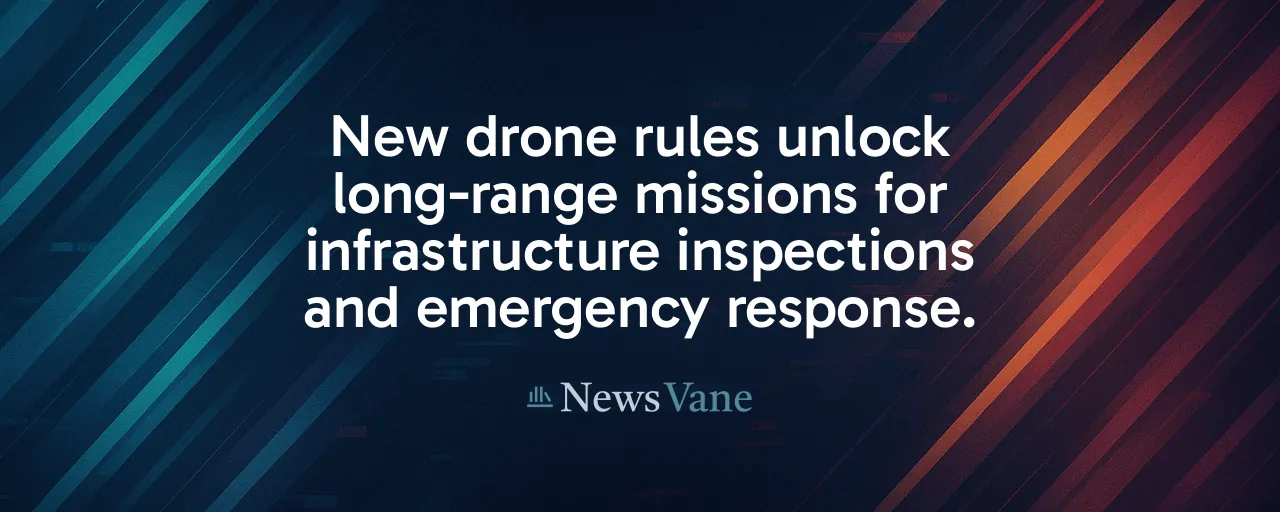A New Chapter for American Aviation
On June 11, 2025, President Trump issued three executive orders to transform U.S. aviation. These directives focus on accelerating drone development, testing electric vertical take-off and landing aircraft (eVTOLs), and reviving supersonic flight. Each order reflects a vision to reclaim American leadership in aviation technology while addressing economic and security priorities.
Global competition adds urgency to these moves. Nations like China and European countries have advanced in drone and eVTOL markets, prompting Washington to respond. Michael Kratsios, Director of the White House Office of Science and Technology Policy, emphasized that the orders aim to free innovators from outdated regulations, enabling them to develop and deploy next-generation aircraft.
Drones Set to Fly Farther
The 'Unleashing American Drone Dominance' order instructs the Federal Aviation Administration to propose beyond-visual-line-of-sight (BVLOS) drone rules within 30 days and finalize them within 240 days. Such rules could unlock long-range missions for infrastructure inspections, emergency response, and medical deliveries. Over 1 million drones, including 420,000 commercial ones, are registered with the FAA, underscoring the sector's scale.
To reduce dependence on foreign manufacturers, the order prioritizes U.S.-made drones in federal purchases and reviews export controls. Concerns about Chinese-made drones, like those from DJI, banned by several agencies over espionage risks, drive this focus. Strengthening domestic supply chains aims to boost both security and economic growth.
Air Taxis and Supersonic Revival
Another order establishes an eVTOL Integration Pilot Program, selecting at least five public-private projects within 180 days to test air taxis, medical response, and rural cargo delivery. Using the FAA's NextGen system, the program builds on a 2017 drone initiative to integrate these vehicles into U.S. airspace. The Department of Defense will also ensure domestic eVTOLs operate on military bases, linking civilian and military needs.
A separate order lifts a 1973 ban on overland supersonic flight, dormant since the Concorde's retirement in 2003. It requires the FAA to set interim noise-certification standards within 180 days. Environmental groups warn that without strict noise and emissions rules, nearby communities could face significant disturbances.
Protecting U.S. Airspace
The 'Restoring American Airspace Sovereignty' order addresses unauthorized drone activity. It mandates law enforcement access to Remote ID data within 60 days and restricts flights over sensitive sites. A Federal Task Force, led by the National Security Advisor, will oversee efforts, with grants aiding state and local agencies in acquiring detection technology.
Drone incursions over military bases, airports, and borders have spiked, yet many facilities lack adequate tracking systems, according to Pentagon reports. Privacy advocates, such as the ACLU, express concerns that widespread drone monitoring could erode personal freedoms, calling for clear safeguards and transparency.
Innovation Meets Regulation
These orders fuel a broader conversation about deregulation's impact on innovation. Historical examples, like the 1978 Airline Deregulation Act, show how fewer rules can spur competition and growth. Spectrum auctions, raising over $230 billion, paved the way for 5G and autonomous vehicles. However, analysts from the Center for Strategic and International Studies argue that clear, risk-based regulations provide optimal support for long-term investment.
Past regulatory failures, such as the 2022 FAA-FCC 5G dispute that threatened flight safety, highlight the need for coordinated oversight. Labor and environmental advocates also stress that eVTOLs and supersonic flight, to avoid harming communities, require alignment with job creation and climate goals.
The Road Ahead
With tight timelines for BVLOS rules, eVTOL pilots, and noise standards, these orders set a bold course. Success could cement U.S. leadership in aviation, driving jobs and enhancing security. Yet, careful execution is critical to balance innovation with safety, privacy, and environmental protections.
Industry leaders, policymakers, and community advocates will closely monitor the FAA's progress. The results could reshape how goods are delivered, emergencies are handled, and people travel, provided the implementation keeps pace with the ambition.
For everyday Americans, tangible benefits like faster deliveries or air taxis remain on the horizon. Still, these orders lay the groundwork for a future where the skies are more dynamic, secure, and accessible to all.
